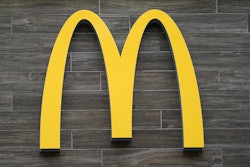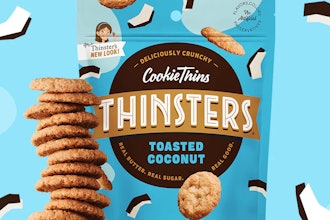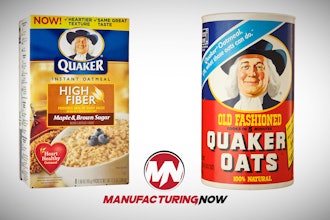Since the first case was filed in 1980, slack-fill litigation against food, beverage and consumer goods companies has skyrocketed. Within the past five years alone, the total number of slack-fill lawsuits in the U.S. has multiplied six-fold. Producers and retailers of consumer products must now be ready to defend against and prevent slack-fill lawsuits in light of the increasing risk of potential liability.
Governing Laws
By definition, “slack fill” is the difference between the capacity of a container and the volume of the actual product contained inside. A container with slack fill that serves no functional purpose could be subject to lawsuits under the Federal Food, Drug, and Cosmetic Act (FDCA) and relevant state regulations.
Both federal and state statutes prohibit misleading and nonfunctional slack-fill packaging. Under the FDCA, the empty space within an opaque container is presumed as non-functional slack fill unless it falls within six detailed exceptions:
- Protection of the contents inside the package
- Result of the machines used to enclose the contents
- Result of unavoidable product settling
- Necessary to perform a specific task
- Food packaged in a reusable container where the container is a part of the presentation and also serves a useful purpose independent of the function to hold food
- The inability to increase the contents or reduce the package size.
Similar to the federal standard, California has its own statutory provisions that govern prohibited slack-fill packaging. California’s functional exceptions are much more specific than the six provided under the FDCA. For example, under the California statute, slack fill is functional only if the packaging is a kit, the exterior serves a computer function, or the container bears a reasonable relationship to the amount of product within it.
Defending A Slack-Fill Lawsuit
The earliest slack-fill lawsuit – Hobby Indus. Assn. of Am., Inc. v. Younger – was filed in 1980 in California state court. The case set the backdrop for future slack-fill lawsuits, as it held that clear disclosures of information on labels may still not counteract the deceptive impression created by packaging sizes. Since then, manufacturers, suppliers, retailers, and the like have all largely defended similar lawsuits by arguing for the functional purposes of product slack fill, filing dispositive motions, claiming federal preemption, and decertifying a class.
Courts apply the functional purpose and reasonable consumer tests to determine whether the slack fill in a package serves any useful purpose. Nonfunctional slack fill is presumed as misleading and, thus, prohibited. Under relevant state and federal code sections, a product that falls within a statutory exception is functional by definition.
Even if a package falls within a functional exception, however, it still must not be deceptively designed or labeled. Courts apply the reasonable consumer standard to determine whether a container itself is misleading to the public. The test inquires whether it is probable that the package could mislead a significant portion of reasonable consumers. Accordingly, claims that fail to allege a violation are subject to dismissal at the inception of the case.
Motions to dismiss, however, have seen mixed results in slack-fill litigation cases. On the one hand, some courts have rejected motions to dismiss on a variety of grounds. A case in 2013 held that the amount of slack fill a consumer can reasonably expect is ultimately a factual question not appropriate at the motion to dismiss stage. (Samet v. Procter & Gamble Co.) Most recently in 2017, a court further expanded the reasonableness inquiry to include circumstances surrounding the purchase of the product. (Iglesias v. Ferrara Candy Co.). Because the plaintiffs in that case could not inspect the candy products sold at a movie theater, dismissal was not appropriate.
On the other hand, some courts have routinely granted motions to dismiss where the plaintiff fails to plead sufficient factual allegations. (Bush v. Mondelez Int’l, Inc. and Ebner v. Fresh, Inc.). This appears especially true where the manufacturer accurately labels the package, including the net weight, quantity, and volume of the contents inside. (Fermin v. Pfizer Inc.).
Manufacturers might further have a preemption defense for claims brought in state courts. The FDCA expressly preempts state laws that deviate from its requirements. However, states may still enforce their own slack-fill regulations to the extent they are identical to the federal requirements.
The Central District of California noted last year in a footnote that “because Cal. Bus. & Prof. Code § 12606.2 parallels 21 C.F.R. § 100, the state statute is likely not preempted.” (Escobar v. Just Born Inc.). Despite this case, the preemption defense could still apply in California. First, the Court’s remark is not controlling as it was only mentioned in dicta. Second, no case has held the same since. A side-by-side comparison of the California and federal statutes further show that the California provisions are not completely identical to the FDCA. Though largely similar, California has fifteen exceptions as opposed to the six under federal regulations. More importantly, California’s definition of nonfunctional slack fill is different from that of the FDCA: the empty space in a package that is filled to “substantially less” than its capacity. The FDCA does not limit the definition to “substantially less” than capacity like the California statute. It could be argued that California’s provision is, therefore, less strict than the federal standard and, thus, preempted.
Most slack-fill litigation is brought in the form of a class action. Some manufacturers have been able to defeat class allegations by arguing lack of commonality. In 2014, for example, a California Federal court found that consumer reliance on the packaging at issue was an individualized question. That the slack fill could fall within one of a number of statutory exceptions further required individual showings of reliance. It was on these bases that the court rejected certification based on lack of commonality. (Turcios v. Carma Labs., Inc.).
How Companies Should Take Action
The recent flood of slack-fill litigation in the U.S. has posed special concern for manufacturers of food, beverage, and pharmaceutical products. While there are many effective ways to defend against a slack-fill lawsuit, including filing dispositive motions, attacking class certification, and invoking state and federal defenses, the costs of defense and the uncertainties associated with litigation generally have led many to settle short of litigation. The most cost-effective means of avoiding litigation is to proactively ensure compliance with the applicable slack-fill statutes. This includes fully explaining a product’s contents, reevaluating packaging sizes, explaining the functional purpose behind any slack fill, and/or making the package transparent for a clear view of the contents. Methods for dealing with slack fill are specific to each product. For some manufacturers, it might be counterproductive and unnecessary to completely redesign a brand. Regardless of the circumstance, however, the main goal to remember is that preventative efforts should revolve around allowing consumers to make informed choices about their purchases.
Failure to bring products into compliance with the applicable statutes can lead to slack-fill litigation. Manufacturers that find themselves the target of such litigation should immediately hire competent counsel who know understand the law and the litigation environment before determining a course of action.
About the Authors
Rudy Perrino is a partner whose practice includes litigation, counseling and regulatory advocacy in the areas of environmental, toxic tort, oil and gas and product liability. His practice also includes advice, counsel and litigation of commercial matters.
Christine Fan is an associate who focuses her practice on defending a wide range of litigation claims.
About Walsworth
Walsworth was founded in 1989 with a commitment to establish a law firm focused on working collaboratively with clients to meet their unique objectives. The firm has grown to over 75 attorneys with offices in Orange, Los Angeles and San Francisco and is known for excellence in litigation and transactional matters. We are equally distinct in our longstanding commitment to diversity, which is recognized through our certification as a Women’s Business Enterprise (WBE) by the Women’s Business Enterprise National Council (WBENC) and by the California Public Utilities Commission, and we are proud to be the largest certified WBE law firm in the United States. Walsworth is also a National Association of Minority and Women Owned Law Firms (NAMWOLF) member, the largest in California and third largest nationwide. For more information, visit www.wfbm.com






















